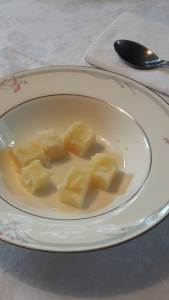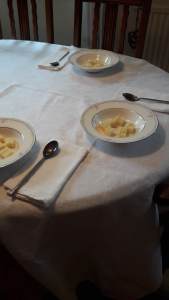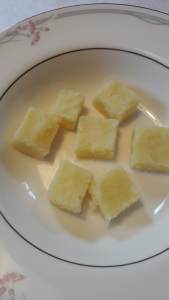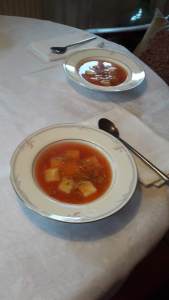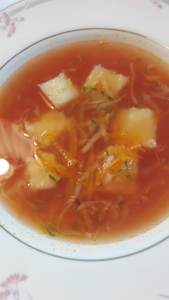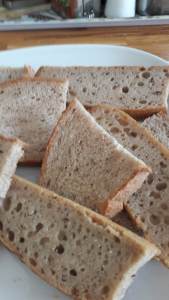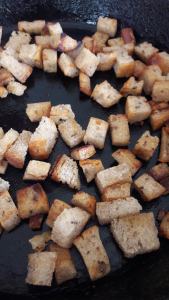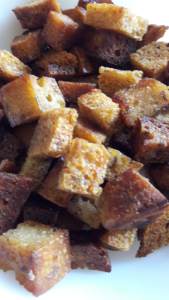I wrote about pulpety over three years ago. They are small meatballs which are simmered, often in stock, not fried.
They are often used as an accompaniment for soup,
In this recipe the liver pulpety are cooked directly in the soup and served with it.
Ingredients – Pulpety
- 150g of pork liver or chicken liver
- 1 beaten egg
- 1 tablespoon of chopped flat-leaved parsley.
- 60g-80g of dried breadcrumbs – see Breadcrumbs – Bułka tarta
- Salt & pepper
- *
- Some plain flour for your hands for shaping.
Method -Pulpety
- Mince the liver or wizz in a mini-chopper.
- In a large bowl mix all the liver, egg and parsley together.
- Add salt & pepper.
- Add enough dried breadcrumbs so that it is a firm mixture – best to do this using both hands, making sure that all the ingredients are thoroughly combined.
- Put some flour in a dish for your hands to make it easier to shape the pulpety.
- Pinch off small bits of the mixture and roll the piece between your hands to make small round balls and place these onto a floured board or tray whilst you make them all.
- *
- Leave these to chill in a cool place or in the fridge.
Ingredients – Soup
- 1 litre of vegetable stock – can be from a cube or powder
- 100g frozen peas
- 100g frozen whole green peas
- Bunch of spring onions
- 2-3 tablespoons of butter
- Salt and pepper to taste
Method – Soup
- Chop the green beans into small pieces similar in size to the peas.
- Chop the green and white parts of the spring onions in to small pieces.
- In a large pan melt the butter.
- Add the chopped spring onions and fry gently till golden.
- Add the peas and beans.
- Add the vegetable stock and bring to the boil.
- Reduce the heat and simmer gently until the peas and peas are cooked.
- Season to taste.
- Bring the soup up to the boil.
- Drop the pulpety into the boiling liquid and then let them simmer for around 5 -7 minutes.
To serve
Polish style would be to have 3-5 pulpety in a bowl of soup – but for a light lunch have a large bowl of soup with lots of pulpety per serving.













































































